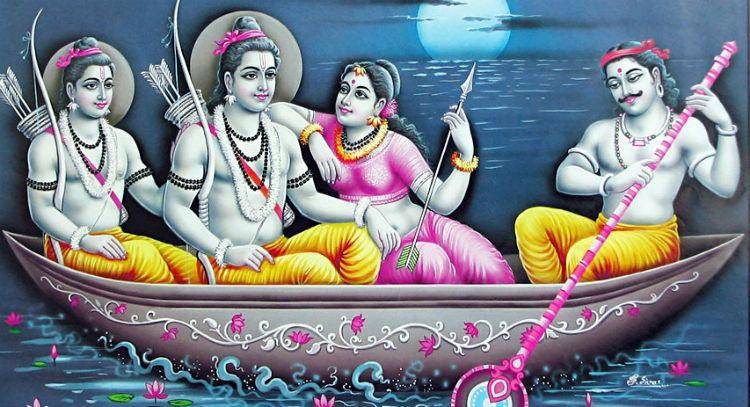Ram and Sita are looked upon as the perfect couple in mythology. The Ram and Sita love story is told and retold because as a woman Sita is looked at as the person who traded the hardships of living in a forest with her life in the palace, just to be with her husband. Her husband also did not leave her side for a moment, took care of her and protected her but destiny had other plans.
Ram And Sita Setting The Moral Code
The Ramayana has long been treated as something of a moral codebook in Hindu society. This is especially true of Tulsidas’ version of the epic – the Ramcharitmanas, which catapults Valmiki’s yet human heroes into the realm of divine infallibility. Even if Tulsidas adheres to the main storyline, he colours it differently. Every action of Ram and Sita is treated as part of a godly plan, and the sweet imperfections of a man-woman relationship are forgotten. Speak to even half a feminist, and you’re likely to meet with some ready repugnance for Ram. Which self-respecting, freethinking woman, after all, would approve of a man who not only victim shames his wife but also abandons her during her pregnancy? But this view is as reductive as the traditional one, which upholds Ram as the maryada purushottam. With some extra tinsel, mythology ultimately reflects human truths; and life, as we know it, is rarely so black and white. But why is the story of Rama and Sita important? We are coming to that.
Ram indulges Sita
Ram’s character must be considered in its entirety, especially in the light of the roles he plays. As a hero, superlative he must be, whether as a son, brother, husband or king. In most cases, he takes a morally hard stand, but he is almost pliant as a husband. It just takes a little patient reading of the man to see that. Arshia Sattar builds a most tender case for Ram in her book, Lost Loves. Like her, it is good to revisit the episode of Sita’s abduction to see this. Ram is an indulgent partner by any measure. Knowing fully well that the golden deer is an illusory rakshasa, Ram concedes to Sita’s demands and agrees to fetch it for her. Could an uncaring spouse simply not refuse?
Ram cannot take his separation from Sita
When Ram returns to find Sita gone is perhaps a moment of epiphany for him. As Khalil Gibran said, “And ever has it been known that love knows not its own depth until the hour of separation.” Ram is disconsolate, shattered. In his haze of grief, he starts asking the animals and trees if they’ve seen Sita. He loses his will to live. Who, among the brokenhearted, will not understand this? It is only when Lakshman hammers some sense into his disconsolate elder brother that Ram comes around and becomes a man with a mission. This is a very important turning point of the Ram and Sita love story.
Romance in the Ram and Sita love story
Another rather charming episode from the Ramayana helps us explore the roantic side of Ram-Sita’s relationship. Sita narrates this to Hanumana when he first goes to Lanka to get news of her. One day, on the Chitrakuta hill, when the couple is resting, a hungry crow attacks Sita. He pecks at her breasts a couple of times, distressing her greatly. Seeing his beloved so, an agitated Ram plucks a blade of kusha grass, breathes magic into it, turns it into a brahmastra and unleashes it on the erring bird. Scared, the bird flies around the world, but the divine arrow doesn’t stop chasing it. In the end, it surrenders to Ram and seeks his protection. But a brahmastra once unleashed cannot be taken back, so the compassionate hero modifies the clause. He spares the crow’s life and says that the weapon would strike him only in one eye. No wonder the Sita and Ram love story is an Epic Indian love story.
A man versus a king
One must hand it to Ram. The valiant defense of his lady love, whether against a mere crow or the mighty king of Lanka, is endearing. One must note that in these instances Ram acts at a personal level as a lover and a husband. On the other hand, his eventual decisions pertaining to her agnipareeksha and banishment are made as a king. Ram’s heartbreak is palpable even the second time around, torn as he is between his love for his wife and his duties as a king. Ram makes the harder choice to make his subjects happy. But he never takes another wife like his father and uses Sita’s golden image during religious ceremonies, while being constantly scoffed at for his loyalty towards an apparently unworthy woman. Being Ram is no easy task. Sita knows and values Ram’s love too much to want to stay behind in Ayodhya or to give in to Ravana’s threats and temptations. Sita too keeps her side of the marital pact as long as she lives. That the face of Ram’s love changes disappointingly at the end of the journey is another matter. But that love inspired them both to walk the road together is what ought to inspire us. The love story of Ram and Sita has many layers we just need to be perceptive to understand better.


